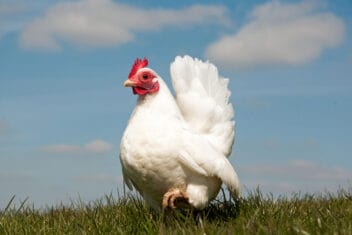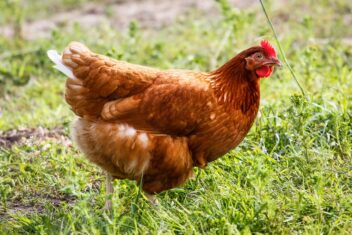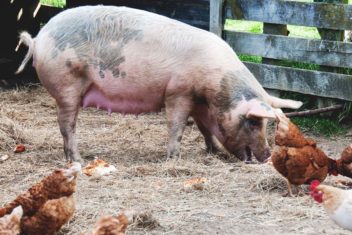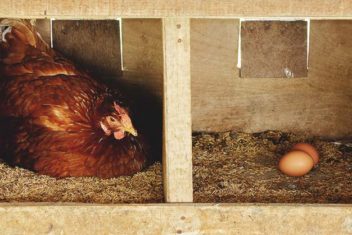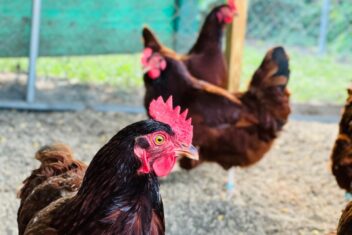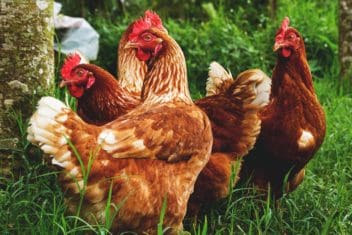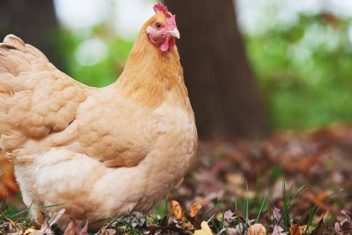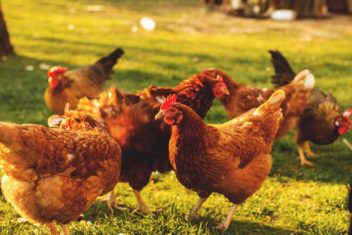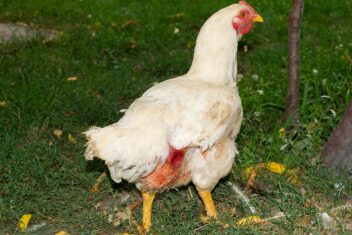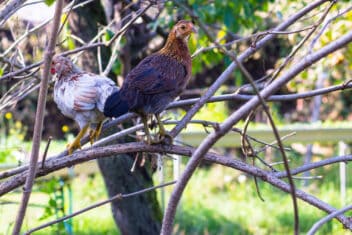Do your chickens run to greet you and stand still so you can pick them up for a snuggle? Do they curl up in your lap and purr like a cat while you pet them? If yes, then you’ve got pet chickens. If not, then your chickens might still be awesome, but they’re more livestock than pets.
Chickens are one of those animals that can go either way. They can become spoiled rotten pets, or they can be easy to care for livestock. It all depends on how you socialize them.
The first set of tame chicks we raised became beloved pets. We brooded them in the house and spent enormous amounts of time taming chicks. It was fun at first.
But later, when they started free ranging, they followed me everywhere and made it hard for me to do my homestead work. They didn’t get along well with new chickens, which made it hard to restock my flock.

The Problems with Limited Chick Socialization

After that, I decided I didn’t want my chickens to be so needy. So, I let a rooster take over management of my old flock.
I moved the brooder out of our house and into an outdoor shed to make it harder for me to spend time with them. Of course, I continued to care for my chicks’ health. I just avoided being as affectionate with them.
Unfortunately, I didn’t like those results either. I ended up with chickens who only came to me for food. Those chickens didn’t like being held. So I had to trick them into letting me pick them up for health inspections. I either waited until they were on the roost or gave them yogurt so they couldn’t just grab their treat and run.
Since then, I’ve done some experimenting to find the balance between raising needy chickens and overly independent chickens. It turns out there’s a pretty easy way to get the best of both worlds. But, to pull it off, you first need to understand flock dynamics.
How to Go About Taming Chicks
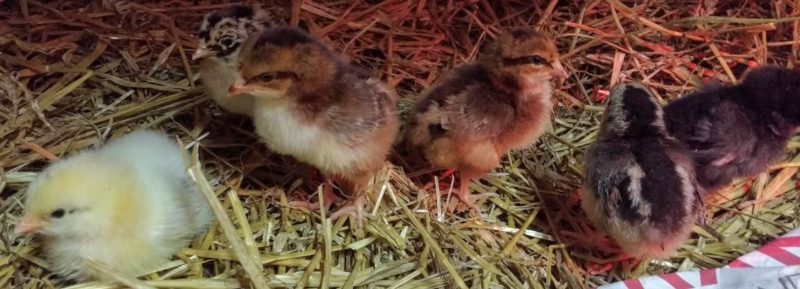
When your chick box arrives in the mail, those adorable little fluff balls are extremely impressionable. In nature, they’d hatch out and be met by a broody hen who would teach them the ways of the chicken world.
Thanks to technology though, we can by-pass the hen and do everything in heat and human-controlled environments. Now, those amazing little chicks can survive cross-country journeys, crammed together in a box with other chicks that weren’t even their incubator mates.
Then with food, water, climate control, and clean conditions, they can grow up to be healthy chickens with very little interaction from their human keepers and no hen to help them along.
Tip 1: Don’t Be a Mother Hen
Shortly after being put in a brooder, chicks thrown together by circumstance will begin to form a little flock of their own. It only takes a day or two for hatchlings to start exhibiting obvious signs of flock dynamics.
If you let that happen, your chicks quickly learn to rely on each other instead of needing a mother hen. If you hover too much and interact too much at the outset though, you create confusion. Some chicks might identify with you as a hen or as a flock mate.
In my opinion, since you aren’t part of the flock and won’t be living with your chickens once in the coop, the most important bonding they will do is with each other.
So, I take a hands off approach for the first day or two of getting new chicks. I give them the care they need, but I don’t handle the chicks any more than I have to such as to make sure they eat and drink.
Tip 2: Befriend the Bold and Brave
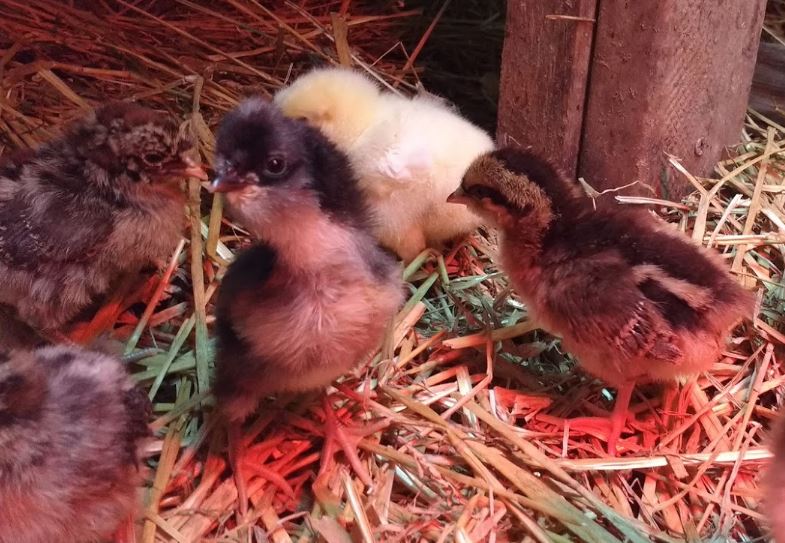
Once I see clear signs that flock dynamics are at work, then I identify a few chicks to socialize first. The bold chicks will explore the full length of the brooder alone. While the less confident chicks will hang back until safety is assured.
Those earlier adventurers become the first flock leaders. They begin to establish a pecking order among themselves. Then, the other more cautious chicks fall in line behind the adventurers.
By identifying and socializing just those early leaders, you can make the whole flock more comfortable with you without having to spend vast amounts of time befriending each chick.
Start with Treats
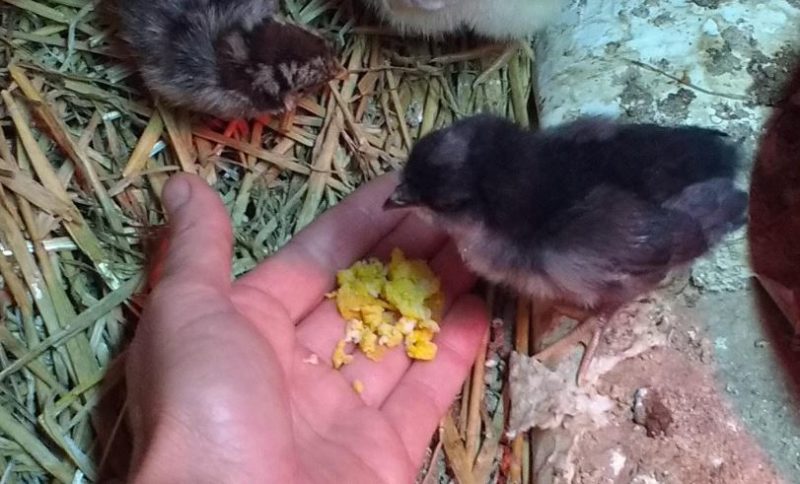
Given their natural boldness, you can use treats to lure leaders to your hand. I usually use finely chopped lettuce or scrambled egg bits.
While taming chicks, I just let them eat from my hand to get them comfortable with having me reach in and out of the brooder. But I don’t try to pick them up at this point. Once your adventurers figure it out, the rest of the flock will quickly follow suit.
Trade Treats for Pets
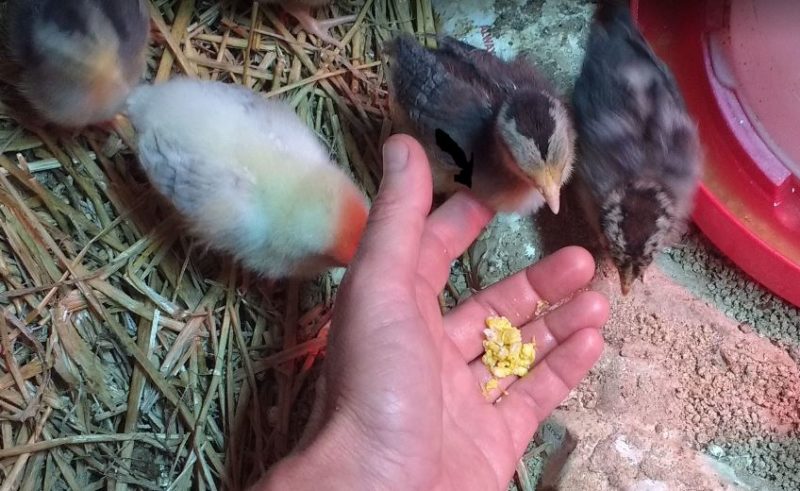
After the chicks consistently come for treats, then you can move on to petting and handling them. Chicks love to have their chests rubbed, particularly their crop area.
You have to be careful not to rub too close to their heads or they panic. But if you pet them gently on the bottom of their chest and crop area, they’ll stand more erect and extend their necks to give you access.
After several times of doing that, they will start to come up to your hand and automatically raise their necks to give you access to pet their chests. When you get to this phase of taming chicks, you don’t need treats anymore. The petting is the treat.
Tip 3: Beguile the Big
If you have a mixed flock with different breeds or males with females, they might grow at different rates. Your first leaders are always brave and bold birds. But as size and sex differences start to emerge, sometimes leadership changes.
Bigger birds and boys will use their rapidly increasing size and strength to take a role in flock leadership. So, you’ll want to keep an eye out for new leaders and make sure to socialize them a bit extra too.
Tip 4: Frequent, Short Visits

I personally don’t want pet chickens. I want friendly chickens that come when they see me but are otherwise independent. So, I don’t spend hours socializing and taming chicks. Instead, I make frequent but short visits.
By doing this, they spend most of their time being concerned with each other and creating their own entertainment. However, whenever they see me, they come right away in case I have something for them — be it treats or pets.
Tip 5: Find the Right Balance
After a while of giving treats and pets with each visit, then sometimes I don’t give them pets or treats. They still come to see what I’ve got. But when they realize I don’t have anything for them, they quickly lose interest and head off again to do their own thing.
This is my ultimate goal in taming chicks. I want responsive but not clingy chickens. I want to be able to capture their attention when I have time to spend with them or need their help. I also want them to give me my space if I’ve got other things on my agenda.
Tip 6: Produce Pet Chickens (ONLY If You Want To)
If you want total pet chickens, you can still use this method to start socializing them. But, you’ll need to take it a bit further. Start by lengthening your visits. Then begin picking your chicks up one by one on a regular basis.
You can take them out of the brooder to give them pets and treats away from the rest of the flock. Some chicks might still be nervous, so take it slow. But, as long as you are calm, move carefully, and pet the right place, even less confident chicks will start to relax alone in your care.
Tip 7: Announce Your Arrival
Announce yourself whenever you approach the brooder. Chicks aren’t the most observant, so they can sometimes be surprised to see you if you don’t tell them you are coming. I start talking loudly to them a good minute before I open the door that way they are never startled to see me.
Chicks that are freaked out every time you open their brooder are much harder to train than chicks that expect you.
Tip 8: Relax
All animals respond better to relaxed people. Be calm. Move slowly and carefully. Consider bonding with your chicks to be an act of mindfulness and living in the moment-ness.
Be prepared to leave your hand in the brooder for several minutes before they get comfortable enough to take a treat from you or climb in for a ride. If you rush things or bring nervous energy to the transaction, chicks will bolt.
Tip 9: Be Patient
Don’t pick chicks up until they are ready. When they start jumping into your hand and using your fingers as a roost, then you are clear for more contact. Snatching them up while they aren’t looking is guaranteed to freak them out.
Some chicks naturally like to be handled and will settle down even when snatched up abruptly. But while taming chicks, most of them seem to respond better if you allow the transaction to unfold on their timeline.
Chicks also grow in confidence as they age. So sometimes you’ll have better results in week two than week one. But by week three when taming chicks, all chicks should be eating out of your hand or lining up for chest rubs. Otherwise, you’ve got some extra work to do to get them social before they get too old to change their ways.
Tip 10: Use Caution With Cockerels

Even cockerels on route to being roosters can become affectionate. All of the roosters I have kept have let me pet and handle them without aggression. However, I did have one rooster that I may have handled a bit too much.
This particular rooster, named Rasputin, was not the alpha rooster. He took a clear back seat to my primary rooster. If my main rooster so much as looked at him, Rasputin went to hide.
When I came around though, Rasputin came running. I was his safe zone. He mostly just hung around me, not getting in my way. But, when guests came to our homestead, Rasputin became protective of me. He even attacked some friends who walked near me.
Since he wasn’t allowed to offer protection to the other hens in our flock, he transferred that protectiveness to me. That, of course, became problematic and problems with roosters tend to get worse, not better, once they start.
I socialize mostly hens. So, I haven’t quite figured out the exact best formula for socializing cockerels. But I can tell you from experience that over-socializing a beta cockerel is not a good idea.
Conclusion to Taming Chicks
Taming chicks so you can have social chickens is fun and easy. But, you do need to have a bit of a strategy to end up with chickens that work well on a homestead.
Now, there’s nothing wrong with having pet chickens or treating chickens primarily as livestock (depending on your needs). Either way is fine, as long as chicks and chickens are given what they need for good health and are allowed to have a flock of their own, they can live happy lives.
As homesteaders though, we often have particular ways of using chickens that make having chickens that are friendly and responsive to us, but not overly affectionate more beneficial. Finding the balance between raising chickens as pets and livestock, can make using grown chickens as helpers for our homestead activities even more beneficial.


